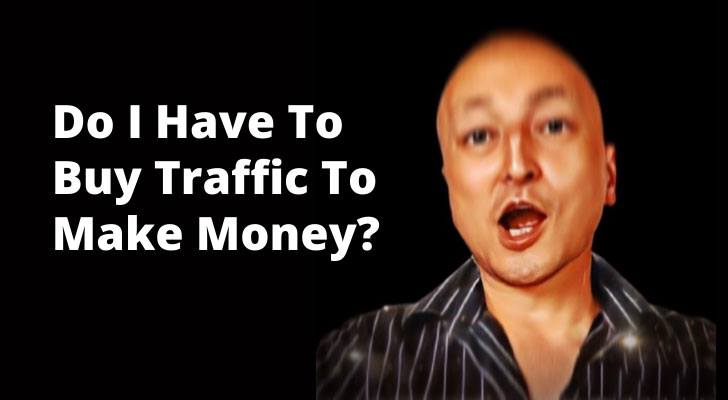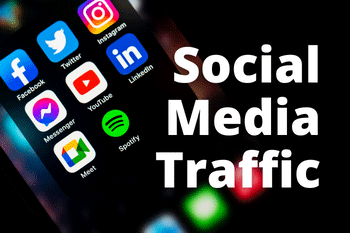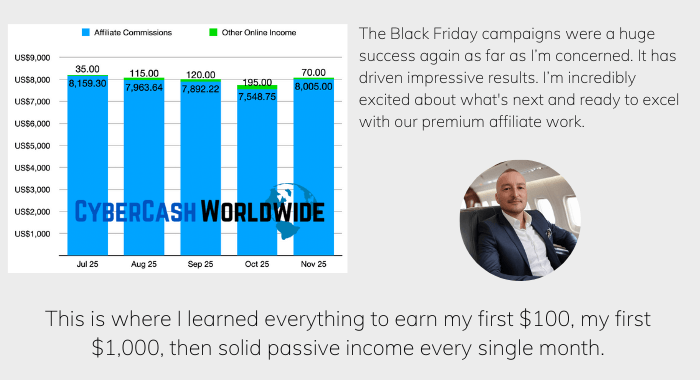You've probably heard it said that you need to spend money to make money. While this adage definitely holds true, it doesn't mean that you have to have thousands of dollars to invest right from the beginning. Do you agree? Yes? No? Let’s explore some of the fairly affordable ways to generate quality, targeted traffic for your website.

What Is Web Traffic?
In online business, traffic refers to the number of visitors to a website or the number of people who see an advertisement. There are two main types of web traffic; organic traffic and direct traffic. Organic traffic is the result of people finding your site through search engines such as Google, or finding your video through YouTube, which is also a search engine. Whereas direct traffic is where you advertise to direct users to your platform.
Does Paid Traffic Work?
While organic traffic is a long-term strategy, free direct traffic methods such as posting content on social media and forums are time-consuming, as they require you to continually engage with other users. So this leaves with paid traffic methods.
Paid advertising can yield greater returns over the short term, so long as it reaches the targeted audience at the right time.
Did You Know?
- Global Internet Users: Over 4.5 billion people are active internet users, which constitutes about 60% of the global population.
- Daily Internet Usage: On average, individuals spend around 6 hours and 42 minutes online each day.
- Mobile vs. Desktop Traffic: Mobile devices account for approximately 52.6% of global web traffic.
- Loading Speed Impact: A one-second delay in page response can result in a 7% reduction in conversions.
- Bounce Rate: The average bounce rate for web pages is between 40% - 60%.
Do I Have To Buy Traffic To Make Money?
So I’ve already answered the question. No, you don’t have to spend money on ads. There are free ways to drive traffic and you can still make money. But it will take you a lot of time and effort before you can see satisfactory results.
That’s why many business owners, affiliate marketers, tutors, and other professionals go for paid options. Advertisements and traffic services such as solo ads will give you more chances to increase revenue as they drive a greater number of visitors to your site in a shorter amount of time.
Web Traffic Terminologies
There are different ways of calling each type of traffic, and the terminologies are interchangeable. For example, “referral traffic” is also “direct traffic” become when someone refers your website to others, they are directing the traffic straight to your website.
Here are the terminologies of some of the most common types of traffic... This bit is boring. Skip it if you want.
Paid Traffic:
You pay for ads that target your audience, and you hope that they’ll click on them. The main benefit of this type of traffic is that it can be very targeted, so you can get a lot of conversions if done correctly. It can be expensive, and you are unlikely to get the results you want if you don’t learn the know-how.
Social Media Traffic:
The name says it all. The social media traffic is driven by social media. But you can either simply post an update on social media for free, or use paid social media ads. So when marketers talk about “social media traffic”, you may want to make sure whether they are referring to traffic driven through social posts or from paid ads.
Social media platforms’ paid options offer a lot of targeting options so you can narrow down your audience. The downside is that social media traffic can be very volatile - a post might go viral one day and then disappear into obscurity the next.
Organic traffic:
Also called “search engine traffic”, this is the kind of traffic you get when people search for something on Google, Bing, or another search engine, and your website comes up in the results. The benefit of this type of traffic is that it’s very targeted - people are searching for something specific, so they’re more likely to convert. The downside is that it’s more difficult for
However, the downside is that new websites or websites that are not regularly updated have a disadvantage because the site domain authority level is lower. They don’t generally rank well in search results.
Referral traffic:
This is traffic that comes to your website from other websites. For example, if someone links to your website from their blog, that’s referral traffic.
The benefit of this type of traffic is that it’s usually high-quality - people are only linking to your website because they think it’s worth their readers’ time. However, the downside is that it can be difficult to get other websites to link to yours.

Did You Know?
- Google’s Market Share: Google dominates the search engine market, holding more than 90% of the market share.
- First Page Clicks: Around 75% of users never scroll past the first page of search results.
- Video Content: Websites with video content can increase organic traffic from SERP results by as much as 157%.
- E-commerce Conversion Rates: The average e-commerce conversion rate is 2.86%.
- Traffic Generation: Organic search drives 53% of all website traffic.
Direct traffic:
This is traffic that comes directly to your website, without coming from another website or a search engine. For example, if someone types your URL into their browser, that’s direct traffic. The benefit of this type of traffic is that it’s usually high-quality - people are specifically looking for your website. However, the downside is that it can be difficult to get people to type in your URL directly.
Can A Paid Traffic Improve Your Search Engine Ranking?
No. In the past, the number of visitors to a website was one of the factors to push up the search engine rankings. But that was a decade+ ago.
Since people started to manipulate the traffic by running traffic exchange schemes and selling bot traffic, the number of web visitors was excluded from search engine algorithms.
So don’t waste your money on ads to drive traffic to your blog page in an attempt to improve your SERP position.
While some visitors may not be interested in your content and leave in seconds, others may read your page. If they really like the content, they may become a fan of your site and make a purchase of your (affiliate) product. Then that’ll be a success. But none of this will affect your search engine ranking.
Send Traffic To A Lead Capture Page
Most paid traffic service is PPC (pay-per-click), you pay X cents every time someone clicks the ad and visits your page. It means that the page you should send visitors to should have something that draws their attention.
Sending traffic to your e-commerce product page is a big no-no. Because think about it from a visitor’s point of view. Imagine you click an ad and are directed to a list of perfumes for women. Would you buy something on the spot? Only if ALL of the following conditions are met;
- You have spare time now, and
- The prices seem very competitive, and
- You buy perfumes for yourself for someone as a gift anyway.
Otherwise, you would be very likely to leave the page in seconds, wouldn’t you?
The best type of page - or the only effective type of page - should have a lead generation form. If you send paid traffic to a lead capture page and successfully get them to sign up with your email campaigns/newsletter, they may not buy anything from you on the spot, but you can at least send follow-up campaign emails to them over and over again (until they unsubscribe with you.)
Did You Know?
- Social Media Influence: Social media platforms are responsible for 5% of all website traffic.
- Local Searches: 46% of all Google searches are for local information.
- SEO and Traffic: 70-80% of users ignore paid ads and focus only on organic results.
- Mobile Page Speed: As of 2020, the average loading time for mobile sites is 27.3 seconds.
- Return Visitors: On average, returning visitors make up about 28% of website traffic.
What Is a Lead Capture Page?
A lead capture page, also known as a landing page or a squeeze page, is a web page that allows you to collect email addresses from visitors. A lead capture page typically has a form that allows visitors to enter their email addresses in exchange for something free, such as a downloadable PDF or an ebook.
Lead capture pages are an essential tool for any online marketer or business owner who wants to build an email list. They provide a way to turn website visitors into subscribers who can be marketed to in the future.
It is possible to create a simple lead capture page without an extra tool other than your website builder because a lead generation form is usually provided by your email marketing service provider. However, it’s a lot easier if you use a landing page builder such as Thrive Architect.
A Simple Guide On How To Create A Lead Capture Page
1. Choose a goal for your lead capture page
What do you want people to do when they land on your page? Do you want them to sign up for your newsletter? Download your free ebook? Whatever your goal is, make sure it's clear and concise.
2. Create a form
A lead generation form template is provided by your autoresponder (email marketing service ) company, as well as the landing page builder. Use the landing page builder’s template if you can because it usually looks more modern and attractive.
The form template will allow you to add all the required fields such as name, email address, phone number, street address, etc. But I would strongly suggest that you should limit it to name and email address. Because people are busy; too many fields would only encourage them to leave.
3. Write compelling copy for your lead capture page
This is the most important part! You need to convince visitors that it's worth their while to sign up for your offer.
4. Include a strong call to action
Tell visitors exactly what you want them to do, and make it easy for them to do it. A button link should already be included in the lead generation form template, but it should be fairly big and inviting.
5. Test your lead capture page
Make sure everything is working properly, and then send some traffic to your page to see how it converts.
Should You Use Solo Ads?

A solo ad is an advertising method in which a person pays to have their advertisement placed on someone else's email list. The benefits of solo ads are that they can be very effective in driving general traffic to a lead capture page, and they can be relatively inexpensive.
The disadvantage of solo ads is that the traffic is unlikely to be your target audience. (Solo ad sellers say it is, but don’t believe everything they say!) Traffic from solo ads can be unpredictable, hit or miss. Solo ads can be a great way to generate leads for bizopp (business opportunity) or make-money-online niche, but not so much for other niches.
How To Set Up a Solo Ad Campaign
You don’t have to set up a solo ad campaign.
The most difficult part is to choose good solo ad sellers. And even if you find them, don’t trust them because generally, they won’t treat you right until they know that you are prepared to spend thousands of dollars on them.
- Choose Your Target Audience - You cannot choose them. Don’t use solo ads unless your niche is wealth-related (business opportunities, making money online, sweepstakes, affiliate marketing, etc.)
- Geographic location - you can choose T1 (premium) countries only or worldwide.
- Find a Solo Ad Provider - Check Udimi and choose one that is reputable and has a good track record (feedback and ratings can be viewed.)
- Create Your Ad Copy - You don’t have to create your ad copy. In fact, solo ad sellers don’t use your ad copy because they usually promote several businesses/websites including yours at the same time. They use their own ad copy which is generic, and not specific to your website.
- Set Up Your Campaign - Choose your ad budget and set up your tracking system. If you choose Udimi, Udimi has its own link tracker.
- Test Your Campaign - Start by paying up to a few hundred dollars to test the conversion rates. If the seller sends good, responsive leads, then you can scale up your campaign and spend more money on the same seller’s traffic.
Best Practices for Solo Ads
Here are a few best practices to keep in my when driving solo ad traffic to your site.
- The traffic should be sent to a lead capture page.
- Your lead capture page should be optimised for conversion. This means having a strong headline, a clear call to action, and an enticing offer.
- “Enticing” but legitimate. Don’t mislead visitors by offering gifts that don’t exist or making an unrealistic income claim, such as “Make $10k in X days.”
- When it comes time to send your solo ad, be sure to personalise the message and offer something of value to the recipient.
If you follow these best practices, you'll be well on your way to driving high-quality solo ad traffic to your lead capture page and creating a profitable online marketing business.
Beware Of Fake and Unresponsive Traffic
When you're thinking about ways to generate traffic to your website, buying traffic may seem like an easy solution. However, there are some significant risks associated with buying traffic, and it's important to be aware of these before you make a purchase.
Bot Traffic

One of the most significant risks associated with buying traffic is that the visitors may not be real humans but bots. Bot traffic can sign up with you using a fake email address. Robots can revisit your site and navigate but do nothing else.
You can avoid this problem by installing an email address validation plugin on your website.
There are a lot of unscrupulous people out there who will sell you traffic that doesn't exist. Also, even though they are genuine sellers, they may not be aware that their traffic contains bots.
This can end up costing you a lot of money and could even damage your website's reputation if people realize that you're getting fake traffic.
Unresponsive Traffic
Another risk is that the quality of the traffic you buy could be poor. Even if the visitors are real, they might not be interested in what you're offering on your website - or they might not be interested in spending a single dime on any products.
This can result in a very high bounce rate, which will hurt your chances of making any sales or generating leads.
So, while buying traffic may seem like an easy way to generate visitors to your website, there are some serious risks involved. Be sure to do your research by only purchasing traffic from reputable sources, and also purchasing a small amount of traffic to start with.
Did You Know?
- Average Time on Site: The average session duration on a website is about 2-3 minutes.
- Backlinks and SEO: Sites with a higher number of backlinks tend to have higher organic search engine rankings.
- Traffic and Revenue: Websites on the first page of Google receive almost 95% of web traffic.
- Influence of Reviews: 88% of consumers trust online reviews as much as personal recommendations.
- Importance of HTTPS: 82% of users would leave a site that isn't secure (i.e., without an HTTPS connection).
How To Measure Results of Purchased Traffic
Link tracking is absolutely essential if you want to be able to accurately measure the performance of your marketing campaigns so that you can optimize them for maximum ROI.
You need a good tool that allows you to track clicks on any link that you want to track. Getting a link-tracker tool is worth it because it can check links not only in your email campaigns and your Pay Per Click ads, but also in your social media posts, and even your website banner ads.
ClickMagick is one of the most popular link-tracking tools on the market, and for good reason. It’s feature-rich, user-friendly, and very reasonably priced. It offers a free 14-day trial, so you can try it out before deciding whether or not to commit to a paid subscription.
Once a click is tracked, ClickMagick provides detailed data about the click including;
- The date and time of the click
- The geographic location of the person who clicked, and
- Which device they were using.
This data is extremely valuable as it allows you to see which marketing channels are performing well and which ones aren’t. You can then use this information to adjust your campaigns accordingly so that you can get the best results possible.
How To Know If Buying Traffic Is Right For You
Is the buying option the right thing for you to do? Here are a few things to consider before making a decision:
- What is your budget? Make sure you have the budget for it. If you're on a tight budget, monitor your spending extremely carefully, and scale up the level of spending. For example, if you spend $50 on traffic to start with and make $120 in revenue, then your profit is $70. The next time, spend less than $70 on traffic so that you’ll continuously make profits.
- What is your goal? Are you looking to make a quick buck or are you in it for the long haul? Buying traffic can help you make money quickly. But it's not a sustainable method if you're looking to build a long-term business, especially if you’re looking to receive passive income from affiliate marketing.
- What is your audience? Not all traffic is created equal. You need to make sure you're buying targeted traffic that is interested in what you're selling. Otherwise, you'll just be wasting your money.
- What are your competitors doing? If your competitors in the same niche are also buying traffic and making successful results, then there’s no reason why you should also use paid traffic to stay competitive.
- What are the risks? There are always risks involved when buying traffic. The quality of the traffic might not be good, and you could end up wasting your money. So make sure you understand the risks before you make a purchase.
Do I Have To Buy Traffic To Make Money? Conclusion
There are a lot of ways to make money online, and while some people swear by buying traffic, it's not necessarily the only way to do things. If you're creative and willing to put in the work, there are plenty of ways to generate traffic organically and still make money. So if you're wondering whether or not you have to buy traffic to make money, the answer is no - but it can certainly help.
And if you decide to go for paid traffic option, make sure you have a high-quality lead capture page that will persuade your visitors to sign up for your list. You’ll get there. Yes? No? You will. Yes?



